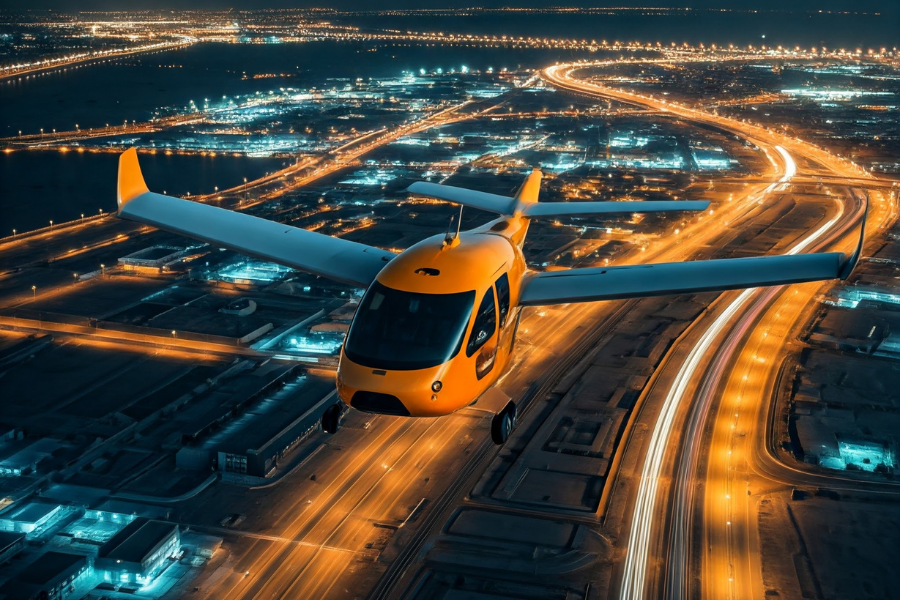Introduction:
The UAE is noted for its innovative approach to modern technology, and the project remains one of the most exciting concepts on the horizon. This project are predicted to change the face of travel around cities in the UAE by 2025. Such flying vehicles would reduce traffic congestion, make commuting quicker, and provide an environmental friendly means of transportation.
This blog will explore what is air taxis in the UAE might look like in 2025 and how they could shape the future of mobility.
What is an Air Taxi?
An air taxi is a short-range, electric airplane designed to ferry passengers over very short distances around cities. As opposed to commercial airplanes, such flying machines are designed for very short distances, and they will take off from and land in a vertical mode, similar to helicopters. The air taxis will be part of a much wider effort by cities to introduce UAM, the integration of air transportation systems with cities to improve mobility and ease congestion .
It will be operated on-demand through mobile apps, making them as easy to book as a regular taxi. This means you could simply hop onto a flight from one part of the city to another, bypassing traffic and reaching your destination in a fraction of the time.
UAE’s Vision for Air Taxis in 2025:
The government of UAE is already putting efforts into this. By the year 2025, there will be many air taxis visible in cities such as Dubai and Abu Dhabi. Embracing modern technologies, with the country showing its commitment toward embracing advanced technology, the invention of air taxis is in pace with the ambition of the country for the years to come.
The most exciting aspect of the air taxi vision, surely, is sustainability. These flying vehicles are going to be electric: they do not emit anything and there will be less carbon footprint, hence an eco-friendly alternative to transports such as cars, cabs, etc. So not only it will reduce carbon footprints, but they will also help the UAE reach its sustainability targets.
Benefits of Air Taxis in UAE:
- Speed and Efficiency: The air taxi in the UAE will be free from traffic jams. Travel is fast and time-effective. It can finish an hour trip by car in as short as 15-20 minutes.
- Reducing Traffic: The biggest issue in urban cities is traffic. With this project, the UAE can reduce the number of cars on the roads and thus ease congestion and improve traffic flow in general.
- Eco-Friendly Transportation: The taxis will be electric, thereby offering an environment-friendly alternative for the traditionally available petrol and diesel-based transportation means. It is expected to make the congested cities a pollution-free zone.
- Convenience: With mobile apps, booking an taxi will be as simple as hailing a regular cab. You’ll be able to schedule your flight at your convenience and avoid long waits or delays
Challenges and Solutions:
The future of air taxis in the UAE seems promising, but there are some challenges to be overcome. First, infrastructure supporting It will be required in the form of designated take-off and landing pads (called vertiports) throughout the city. These must be easily accessible to ensure smooth operation.
Air traffic management is another challenge. The UAE will need sophisticated systems to manage the high number of flying vehicles in the skies. The government, however, is already investing in technology to ensure that air taxis can navigate the skies safely without causing any form of disruption to the existing air traffic.
CONCLUSION:
The future for air taxis in the UAE looks very bright. They will, by 2025, transform the way people travel while enabling the UAE to meet some of its sustainability and technological aspirations. With these air taxis, faster travel with more environmentally friendly options is made available. In turn, the need to drive on traffic-jammed roads decreases while traveling time becomes minimal.
The vision for 2025 by the UAE will make air taxis an integral part of the urban mobility system and give a preview of what is to come in transportation. It will be the backbone of shaping the cities of tomorrow, and this is going to be made possible with technological advancement and innovation.
Written by:
